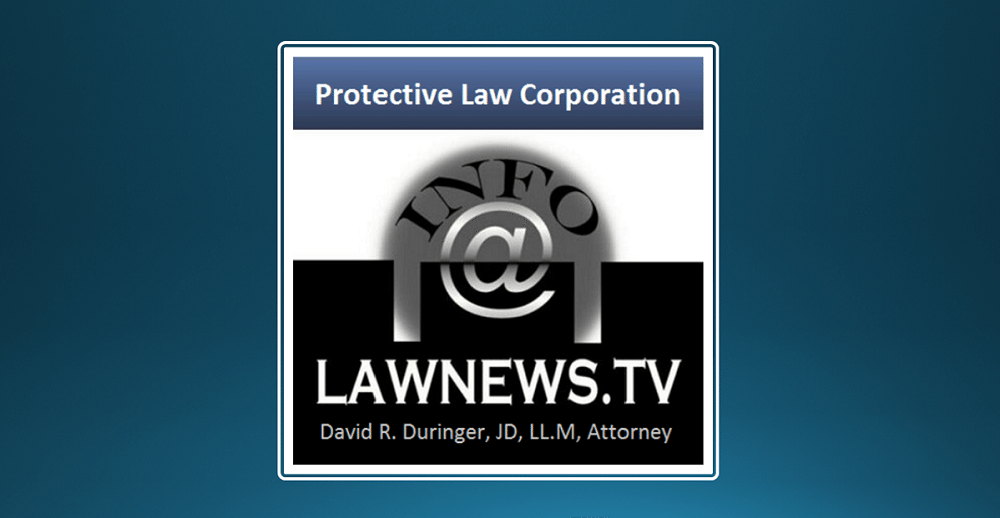In a blockbuster decision released minutes ago, the Supreme Court of the United States has held with a solid 6-3 majority in the case of New York State Rifle & Pistol Association, Inc. v. Bruen, that New York’s statutory restriction against bearing arms outside the home is unconstitutional because it violates the Fourteenth Amendment (and the Second Amendment). New York’s “may issue” carry law requiring “good cause” for discretionary issuance of a permit to carry by the state, is the famous Sullivan Act of 1911 which was actually supported by the wimpy NRA as a sort of compromise and served as the model for many states, including California. While the vast majority of states have repealed such laws over the last three decades, opting instead for either shall-issue permit regimes, or ditching permits altogether, and many states allow open carry without a permit, this decision is an absolute earthquake legally, politically, and socially, for the few states remaining with “may issue” regimes, like California. I predict this decision will end one-party rule in California, although it is dangerous to underestimate CA GOP’s astounding ability to mess things up and miss opportunities like this. And what is the opportunity? Put simply, right to carry, and very probably all gun control, is no longer a political issue as of today. (Going a bit out on a limb here, until i analyze the standard of review used.)
Congrats, America. Your right to bear arms outside your home has, at long last, been recognized by the Supreme Court. (Anyone with sense recognized this long ago.) If you left California for other states at least partly due to gun restrictions (I know many who did), y’all come back now, y’hear? Weather’s still great, can’t mess that up.
As a volunteer concealed carry instructor and estate planning attorney who has emphasized planning for legacy of firearm training, this case is hugely important to me and i look forward to reading and analyzing this decision. “Unfortunately” i have back to back estate planning appointments today, but i’ll get something out ASAP. In the meantime, here is the slip opinion, and i’ll copy the syllabus here:
(Slip Opinion) OCTOBER TERM, 2021 1
Syllabus
NOTE: Where it is feasible, a syllabus (headnote) will be released, as is
being done in connection with this case, at the time the opinion is issued.
The syllabus constitutes no part of the opinion of the Court but has been
prepared by the Reporter of Decisions for the convenience of the reader.
See United States v. Detroit Timber & Lumber Co., 200 U. S. 321, 337.
SUPREME COURT OF THE UNITED STATES
Syllabus
NEW YORK STATE RIFLE & PISTOL ASSOCIATION,
INC., ET AL. v. BRUEN, SUPERINTENDENT OF NEW
YORK STATE POLICE, ET AL.
CERTIORARI TO THE UNITED STATES COURT OF APPEALS FOR
THE SECOND CIRCUIT
No. 20–843. Argued November 3, 2021—Decided June 23, 2022
The State of New York makes it a crime to possess a firearm without a
license, whether inside or outside the home. An individual who wants
to carry a firearm outside his home may obtain an unrestricted license
to “have and carry” a concealed “pistol or revolver” if he can prove that
“proper cause exists” for doing so. N. Y. Penal Law Ann. §400.00(2)(f ).
An applicant satisfies the “proper cause” requirement only if he can
“demonstrate a special need for self-protection distinguishable from
that of the general community.” E.g., In re Klenosky, 75 App. Div. 2d
793, 428 N. Y. S. 2d 256, 257.
Petitioners Brandon Koch and Robert Nash are adult, law-abiding
New York residents who both applied for unrestricted licenses to carry
a handgun in public based on their generalized interest in self-defense.
The State denied both of their applications for unrestricted licenses,
allegedly because Koch and Nash failed to satisfy the “proper cause”
requirement. Petitioners then sued respondents—state officials who
oversee the processing of licensing applications—for declaratory and
injunctive relief, alleging that respondents violated their Second and
Fourteenth Amendment rights by denying their unrestricted-license
applications for failure to demonstrate a unique need for self-defense.
The District Court dismissed petitioners’ complaint and the Court of
Appeals affirmed. Both courts relied on the Second Circuit’s prior decision in Kachalsky v. County of Westchester, 701 F. 3d 81, which had
sustained New York’s proper-cause standard, holding that the requirement was “substantially related to the achievement of an important
governmental interest.” Id., at 96.
2 NEW YORK STATE RIFLE & PISTOL ASSN., INC. v. BRUEN
Syllabus
Held: New York’s proper-cause requirement violates the Fourteenth
Amendment by preventing law-abiding citizens with ordinary self-defense needs from exercising their Second Amendment right to keep and
bear arms in public for self-defense. Pp. 8–63.
(a) In District of Columbia v. Heller, 554 U. S. 570, and McDonald v.
Chicago, 561 U. S. 742, the Court held that the Second and Fourteenth
Amendments protect an individual right to keep and bear arms for
self-defense. Under Heller, when the Second Amendment’s plain text
covers an individual’s conduct, the Constitution presumptively protects that conduct, and to justify a firearm regulation the government
must demonstrate that the regulation is consistent with the Nation’s
historical tradition of firearm regulation. Pp. 8–22.
(1) Since Heller and McDonald, the Courts of Appeals have developed a “two-step” framework for analyzing Second Amendment challenges that combines history with means-end scrutiny. The Court rejects that two-part approach as having one step too many. Step one is
broadly consistent with Heller, which demands a test rooted in the Second Amendment’s text, as informed by history. But Heller and McDonald do not support a second step that applies means-end scrutiny in
the Second Amendment context. Heller’s methodology centered on
constitutional text and history. It did not invoke any means-end test
such as strict or intermediate scrutiny, and it expressly rejected any
interest-balancing inquiry akin to intermediate scrutiny. Pp. 9–15.
(2) Historical analysis can sometimes be difficult and nuanced,
but reliance on history to inform the meaning of constitutional text is
more legitimate, and more administrable, than asking judges to “make
difficult empirical judgments” about “the costs and benefits of firearms
restrictions,” especially given their “lack [of] expertise” in the field.
McDonald, 561 U. S., at 790–791 (plurality opinion). Federal courts
tasked with making difficult empirical judgments regarding firearm
regulations under the banner of “intermediate scrutiny” often defer to
the determinations of legislatures. While judicial deference to legislative interest balancing is understandable—and, elsewhere, appropriate—it is not deference that the Constitution demands here. The Second Amendment “is the very product of an interest balancing by the
people,” and it “surely elevates above all other interests the right of
law-abiding, responsible citizens to use arms” for self-defense. Heller,
554 U. S., at 635. Pp. 15–17.
(3) The test that the Court set forth in Heller and applies today
requires courts to assess whether modern firearms regulations are
consistent with the Second Amendment’s text and historical understanding. Of course, the regulatory challenges posed by firearms today
are not always the same as those that preoccupied the Founders in
1791 or the Reconstruction generation in 1868. But the Constitution
Cite as: 597 U. S. ____ (2022) 3
Syllabus
can, and must, apply to circumstances beyond those the Founders specifically anticipated, even though its meaning is fixed according to the
understandings of those who ratified it. See, e.g., United States v.
Jones, 565 U. S. 400, 404–405. Indeed, the Court recognized in Heller
at least one way in which the Second Amendment’s historically fixed
meaning applies to new circumstances: Its reference to “arms” does not
apply “only [to] those arms in existence in the 18th century.” 554 U. S.,
at 582.
To determine whether a firearm regulation is consistent with the
Second Amendment, Heller and McDonald point toward at least two
relevant metrics: first, whether modern and historical regulations impose a comparable burden on the right of armed self-defense, and second, whether that regulatory burden is comparably justified. Because
“individual self-defense is ‘the central component’ of the Second
Amendment right,” these two metrics are “ ‘central’ ” considerations
when engaging in an analogical inquiry. McDonald, 561 U. S., at 767
(quoting Heller, 554 U. S., at 599).
To be clear, even if a modern-day regulation is not a dead ringer for
historical precursors, it still may be analogous enough to pass constitutional muster. For example, courts can use analogies to “longstanding” “laws forbidding the carrying of firearms in sensitive places such
as schools and government buildings” to determine whether modern
regulations are constitutionally permissible. Id., at 626. That said,
respondents’ attempt to characterize New York’s proper-cause requirement as a “sensitive-place” law lacks merit because there is no historical basis for New York to effectively declare the island of Manhattan
a “sensitive place” simply because it is crowded and protected generally by the New York City Police Department. Pp. 17–22.
(b) Having made the constitutional standard endorsed in Heller
more explicit, the Court applies that standard to New York’s propercause requirement. Pp. 23–62.
(1) It is undisputed that petitioners Koch and Nash—two ordinary, law-abiding, adult citizens—are part of “the people” whom the
Second Amendment protects. See Heller, 554 U. S., at 580. And no
party disputes that handguns are weapons “in common use” today for
self-defense. See id., at 627. The Court has little difficulty concluding
also that the plain text of the Second Amendment protects Koch’s and
Nash’s proposed course of conduct—carrying handguns publicly for
self-defense. Nothing in the Second Amendment’s text draws a
home/public distinction with respect to the right to keep and bear
arms, and the definition of “bear” naturally encompasses public carry.
Moreover, the Second Amendment guarantees an “individual right to
possess and carry weapons in case of confrontation,” id., at 592, and
confrontation can surely take place outside the home. Pp. 23–24.
4 NEW YORK STATE RIFLE & PISTOL ASSN., INC. v. BRUEN
Syllabus
(2) The burden then falls on respondents to show that New York’s
proper-cause requirement is consistent with this Nation’s historical
tradition of firearm regulation. To do so, respondents appeal to a variety of historical sources from the late 1200s to the early 1900s. But
when it comes to interpreting the Constitution, not all history is created equal. “Constitutional rights are enshrined with the scope they
were understood to have when the people adopted them.” Heller, 554
U. S., at 634–635. The Second Amendment was adopted in 1791; the
Fourteenth in 1868. Historical evidence that long predates or postdates either time may not illuminate the scope of the right. With these
principles in mind, the Court concludes that respondents have failed
to meet their burden to identify an American tradition justifying New
York’s proper-cause requirement. Pp. 24–62.
(i) Respondents’ substantial reliance on English history and
custom before the founding makes some sense given Heller’s statement
that the Second Amendment “codified a right ‘inherited from our English ancestors.’ ” 554 U. S., at 599. But the Court finds that history
ambiguous at best and sees little reason to think that the Framers
would have thought it applicable in the New World. The Court cannot
conclude from this historical record that, by the time of the founding,
English law would have justified restricting the right to publicly bear
arms suited for self-defense only to those who demonstrate some special need for self-protection. Pp. 30–37.
(ii) Respondents next direct the Court to the history of the Colonies and early Republic, but they identify only three restrictions on
public carry from that time. While the Court doubts that just three
colonial regulations could suffice to show a tradition of public-carry
regulation, even looking at these laws on their own terms, the Court is
not convinced that they regulated public carry akin to the New York
law at issue. The statutes essentially prohibited bearing arms in a
way that spread “fear” or “terror” among the people, including by carrying of “dangerous and unusual weapons.” See 554 U. S., at 627.
Whatever the likelihood that handguns were considered “dangerous
and unusual” during the colonial period, they are today “the quintessential self-defense weapon.” Id., at 629. Thus, these colonial laws
provide no justification for laws restricting the public carry of weapons
that are unquestionably in common use today. Pp. 37–42.
(iii) Only after the ratification of the Second Amendment in
1791 did public-carry restrictions proliferate. Respondents rely heavily on these restrictions, which generally fell into three categories:
common-law offenses, statutory prohibitions, and “surety” statutes.
None of these restrictions imposed a substantial burden on public
carry analogous to that imposed by New York’s restrictive licensing
regime.Cite as: 597 U. S. ____ (2022) 5
Syllabus
Common-Law Offenses. As during the colonial and founding periods, the common-law offenses of “affray” or going armed “to the terror
of the people” continued to impose some limits on firearm carry in the
antebellum period. But there is no evidence indicating that these common-law limitations impaired the right of the general population to
peaceable public carry.
Statutory Prohibitions. In the early to mid-19th century, some
States began enacting laws that proscribed the concealed carry of pistols and other small weapons. But the antebellum state-court decisions upholding them evince a consensus view that States could not
altogether prohibit the public carry of arms protected by the Second
Amendment or state analogues.
Surety Statutes. In the mid-19th century, many jurisdictions began
adopting laws that required certain individuals to post bond before
carrying weapons in public. Contrary to respondents’ position, these
surety statutes in no way represented direct precursors to New York’s
proper-cause requirement. While New York presumes that individuals have no public carry right without a showing of heightened need,
the surety statutes presumed that individuals had a right to public
carry that could be burdened only if another could make out a specific
showing of “reasonable cause to fear an injury, or breach of the peace.”
Mass. Rev. Stat., ch. 134, §16 (1836). Thus, unlike New York’s regime,
a showing of special need was required only after an individual was
reasonably accused of intending to injure another or breach the peace.
And, even then, proving special need simply avoided a fee.
In sum, the historical evidence from antebellum America does
demonstrate that the manner of public carry was subject to reasonable
regulation, but none of these limitations on the right to bear arms operated to prevent law-abiding citizens with ordinary self-defense needs
from carrying arms in public for that purpose. Pp. 42–51.
(iv) Evidence from around the adoption of the Fourteenth
Amendment also does not support respondents’ position. The “discussion of the [right to keep and bear arms] in Congress and in public
discourse, as people debated whether and how to secure constitutional
rights for newly free slaves,” Heller, 554 U. S., at 614, generally
demonstrates that during Reconstruction the right to keep and bear
arms had limits that were consistent with a right of the public to peaceably carry handguns for self-defense. The Court acknowledges two
Texas cases—English v. State, 35 Tex. 473 and State v. Duke, 42 Tex.
455—that approved a statutory “reasonable grounds” standard for
public carry analogous to New York’s proper-cause requirement. But
these decisions were outliers and therefore provide little insight into
how postbellum courts viewed the right to carry protected arms in public. See Heller, 554 U. S., at 632. Pp. 52–58.
6 NEW YORK STATE RIFLE & PISTOL ASSN., INC. v. BRUEN
Syllabus
(v) Finally, respondents point to the slight uptick in gun regulation during the late-19th century. As the Court suggested in Heller,
however, late-19th-century evidence cannot provide much insight into
the meaning of the Second Amendment when it contradicts earlier evidence. In addition, the vast majority of the statutes that respondents
invoke come from the Western Territories. The bare existence of these
localized restrictions cannot overcome the overwhelming evidence of
an otherwise enduring American tradition permitting public carry.
See Heller, 554 U. S., at 614. Moreover, these territorial laws were
rarely subject to judicial scrutiny, and absent any evidence explaining
why these unprecedented prohibitions on all public carry were understood to comport with the Second Amendment, they do little to inform
“the origins and continuing significance of the Amendment.” Ibid.; see
also The Federalist No. 37, p. 229. Finally, these territorial restrictions deserve little weight because they were, consistent with the
transitory nature of territorial government, short lived. Some were
held unconstitutional shortly after passage, and others did not survive
a Territory’s admission to the Union as a State. Pp. 58–62.
(vi) After reviewing the Anglo-American history of public carry,
the Court concludes that respondents have not met their burden to
identify an American tradition justifying New York’s proper-cause requirement. Apart from a few late-19th-century outlier jurisdictions,
American governments simply have not broadly prohibited the public
carry of commonly used firearms for personal defense. Nor have they
generally required law-abiding, responsible citizens to “demonstrate a
special need for self-protection distinguishable from that of the general
community” to carry arms in public. Klenosky, 75 App. Div. 2d, at 793,
428 N. Y. S. 2d, at 257. P. 62.
(c) The constitutional right to bear arms in public for self-defense is
not “a second-class right, subject to an entirely different body of rules
than the other Bill of Rights guarantees.” McDonald, 561 U. S., at 780
(plurality opinion). The exercise of other constitutional rights does not
require individuals to demonstrate to government officers some special
need. The Second Amendment right to carry arms in public for selfdefense is no different. New York’s proper-cause requirement violates
the Fourteenth Amendment by preventing law-abiding citizens with
ordinary self-defense needs from exercising their right to keep and
bear arms in public. Pp. 62–63.
818 Fed. Appx. 99, reversed and remanded.
THOMAS, J., delivered the opinion of the Court, in which ROBERTS, C. J.,
and ALITO, GORSUCH, KAVANAUGH, and BARRETT, JJ., joined. ALITO, J.,
filed a concurring opinion. KAVANAUGH, J., filed a concurring opinion, in
which ROBERTS, C. J., joined. BARRETT, J., filed a concurring opinion.
BREYER, J., filed a dissenting opinion, in which SOTOMAYOR and KAGAN,
JJ., joined.







